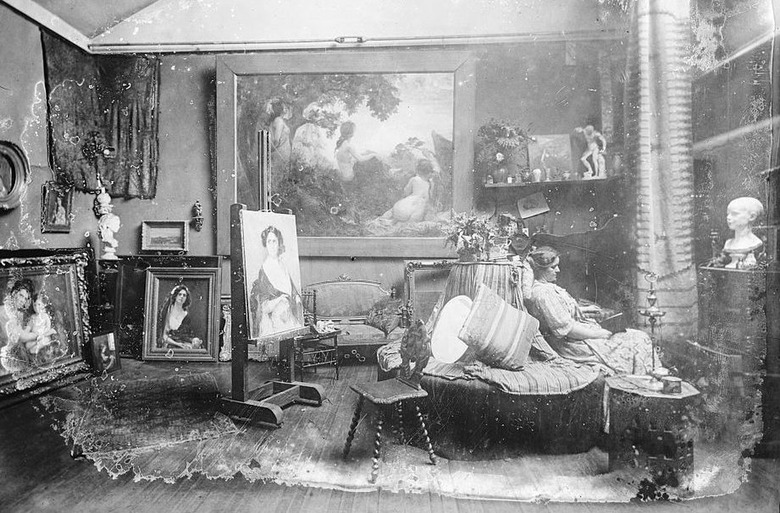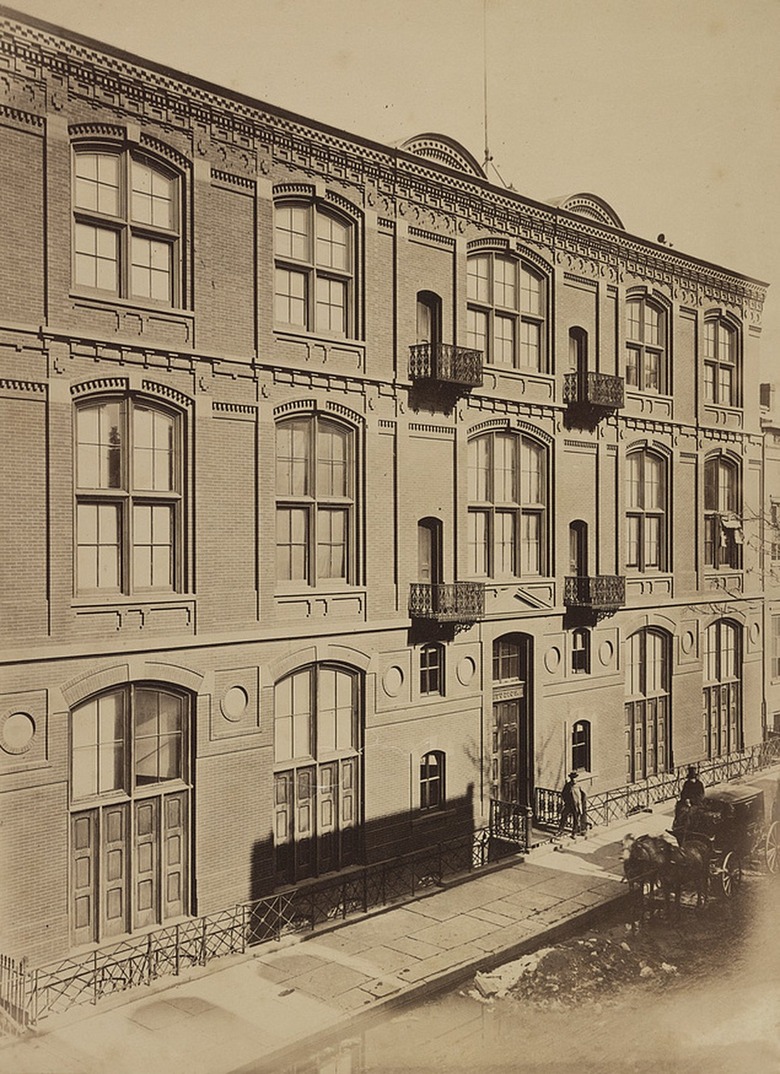The History Of The Studio Apartment Is More Glam Than You'd Think
When you hear the term "studio apartment," images of cramped one-room dwellings probably come to mind, and claustrophobia alarm bells might start going off. As many of us have shifted to work-from-home lifestyles, notions of studio apartment living might not be appealing or even realistic in 2022. Given these modern-day associations, you might be surprised to hear that the history of the studio apartment is rooted in the booming arts scene of the mid-nineteenth century in America — specifically, in New York City.
In a recent video segment for Architectural Digest, architect Michael Wyetzner of Michielli + Wyetzner Architects gives a bite-size breakdown of studio apartments in New York. Despite their current reputation, studios were originally occupied by rich artists from wealthy families in the late 1800s. They were dubbed "studios" because their creative inhabitants not only lived in them, but they also made their art on site, much like in an art studio.
Architectural historian Elyse Hoganson writes in her 2020 Masters of Historic Preservation dissertation that studio buildings were first conceived of as a means of providing enough housing for the sky-rocketing New York City population in the 1800s. American architects looked to Europe for design solutions and used the French flat prominent in Paris as a model.
At the same time, the arts scene in the United States was also on the rise, and studio apartments offered rich communal living opportunities that were attractive to this influx of emerging creators. Early studio apartments were, in fact, designed with artists in mind, including features like double-height windows to let in ample natural light optimal for all sorts of art-making.
According to Hoganson, the Tenth Street Studio Building in New York City is widely accepted as the first-ever studio apartment building. Built in 1857, it was designed by American architect Richard Morris Hunt, whose work had a strong French influence due to his attendance of École des Beaux-Arts (aka School of Fine Arts) in Paris. He even had his own studio in the building, where he taught others Beaux-Arts architectural methods.
Sarah Bean Apmann of the Greenwich Village Society for Historic Preservation reports that the Tenth Street Studio Building was built with the sole purpose of providing studios and living space for artists. It was the first of its kind not just in America, but globally.
William Merritt Chase, an impressionist painter and founder of the Parsons School of Design, is one of the most noteworthy artists to have resided in the Tenth Street Studio Building. Hoganson shares that from 1878 to 1895, Chase rented his studio there, which is where he ran workshops and a salon for artists, musicians, and other creatives. He decorated his space lavishly with items and art he collected while traveling and training abroad.
"His studio was a symbolic extension of his artistic persona in addition to a practical space for his art-making located conveniently near his patrons," pens Hoganson. As his notoriety grew, Chase eventually took over Tenth Street's gallery space for his own exhibitions.
Tenth Street was just one of the many famous studio apartment buildings in which artists thrived throughout the nineteenth and twentieth centuries. The Carnegie Hall Studio Towers was another iconic location of studio apartments, built directly above the world-famous concert hall. According to Lauren Fiorelli of WNYC, Andrew Carnegie built the two towers in 1894 and 1896, respectively, to offer housing and studio spaces for artists (and to bring in additional revenue).
Between the two towers, there were 170 studios in total. They housed a staggeringly impressive cast of artists, including Mark Twain, Leonard Bernstein, Marlon Brando, Bill Cunningham, Isadora Duncan, Editta Sherman (pictured above), Elizabeth Sargent, Agnes de Mille, and Garson Kanin. The Carnegie Hall Studio Towers were converted into educational facilities in 2010, which contain 24 practice rooms and teaching studios for young musicians.
The studio apartment's fall from grace came through a sneaky tactic from the real estate field, explains Wyetzner in the Architectural Digest video. The industry took the term "studio apartment" and began applying it to one-room apartments that were nothing like the original New York City studio apartments of the eighteenth and early-nineteenth century. The marketing strategy was meant to romanticize these small apartments with a more enticing name than "efficiency apartment," which Wyetzner says is what they were formerly called.
While a contemporary studio apartment might not be as spacious as the original, who says coziness can't breed creativity?

